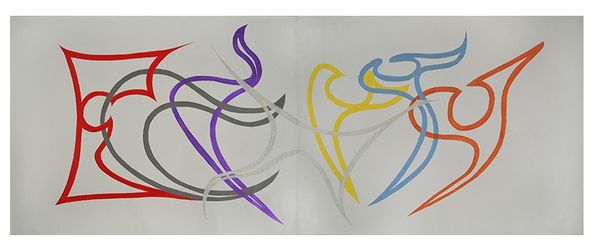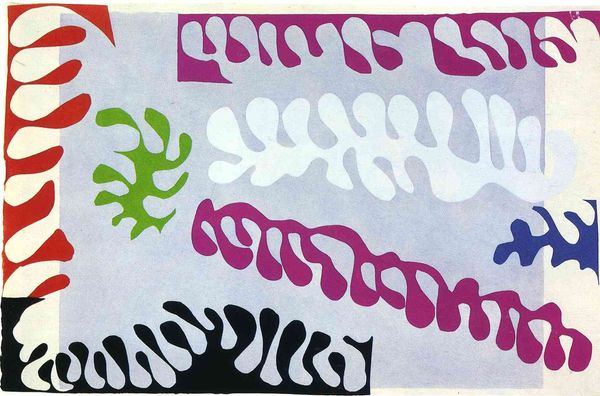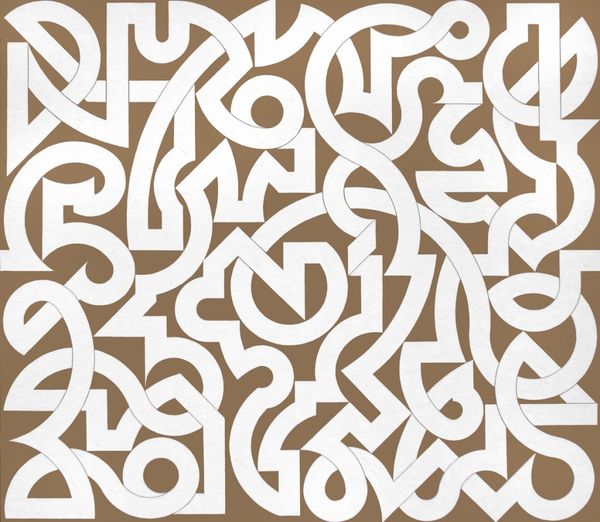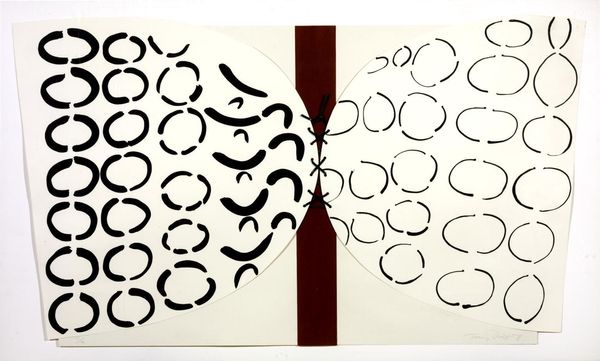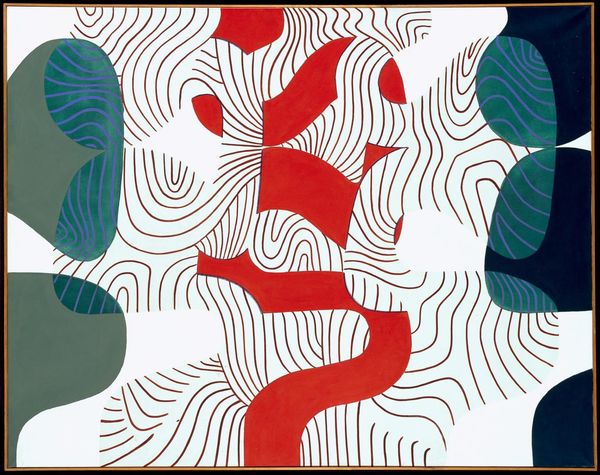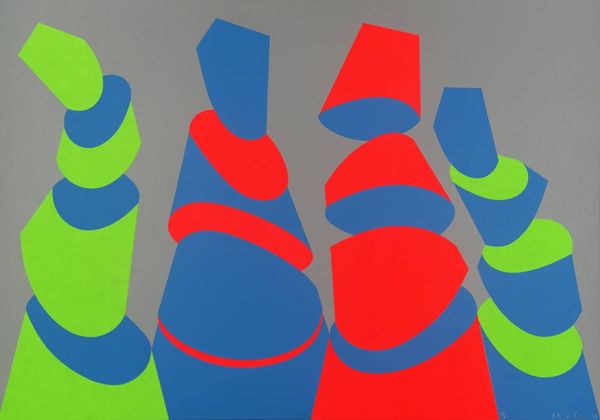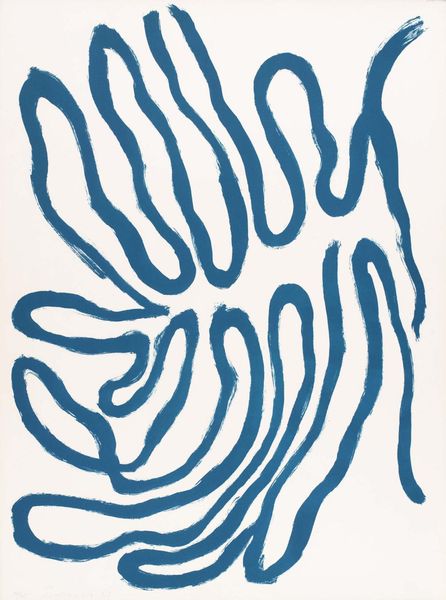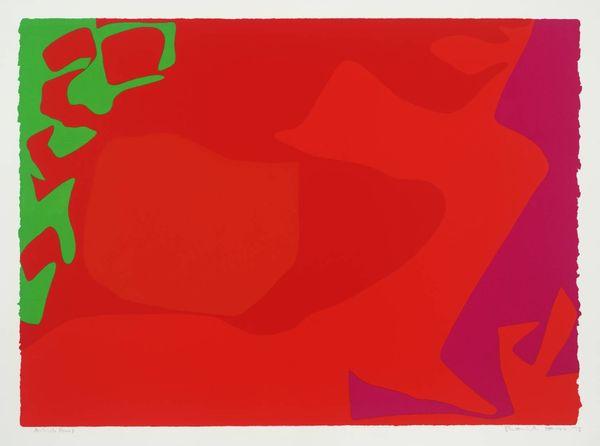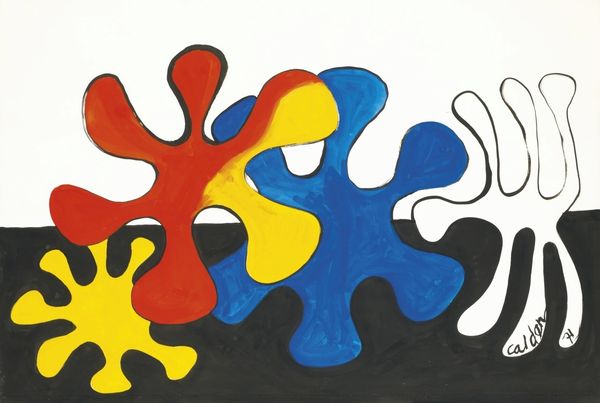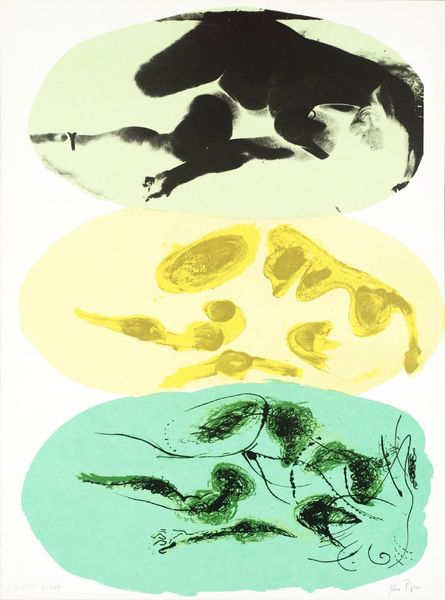
Copyright: Modern Artists: Artvee
Editor: So this is "Le Lagon," made by Henri Matisse in 1947. It appears to be an acrylic painting, and I'm struck by how simplified the forms are – they’re almost like paper cutouts. What strikes you most about it? Curator: What fascinates me is Matisse's engagement with the physical act of creation. The large color planes immediately signal a flattened perspective, pushing back against traditional notions of depth. We see form distilled, nearly divorced from its mimetic function. Let’s think about the industrial production of these paints. Acrylics became commercially viable around this time, impacting art production due to their rapid drying and flexibility. How does that influence your interpretation? Editor: That’s interesting, the quick-drying time probably freed him up, right? I mean, he could layer the paint faster, or correct mistakes. So it's almost a dialogue between his artistic vision and the industrial processes available to him at the time? Curator: Exactly. These colours, commercially available and flatly applied, resist traditional notions of artistic skill demonstrated through brushwork or complex glazing. Where does ‘art’ reside then? It becomes more about the arrangement, the composition, and his conceptual decisions. We must also consider the cultural backdrop. Post-war society was redefining itself and Matisse himself experienced the displacement caused by the war; do you think that the seeming ease is at odds with that post-war reality? Editor: It's interesting to think about the contrast between the light and cheerful quality of this image versus the context of the devastation from the second world war. I can see the painting reflecting both his engagement with the joy of creating and perhaps a deep sense of reflection, or even escape from reality. Curator: It's precisely within this tension that we locate the cultural significance. This painting offers a powerful reminder to analyze both the artwork and its means of production in relation to the broader socio-political landscape. The materials and methods become active agents in conveying meaning. Editor: That makes me look at this artwork, and all artworks, in a totally new light – thanks!
Comments
No comments
Be the first to comment and join the conversation on the ultimate creative platform.
